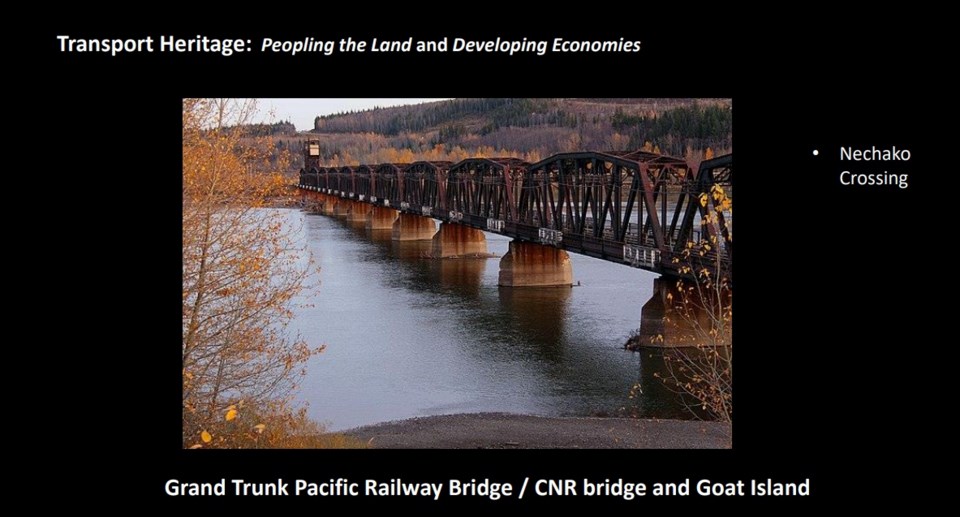The Prince George Heritage Commission got a first look Thursday at an effort to add to the city's registry of historically significant buildings and sites.
According to a presentation, the idea is to expand the definition of what qualifies as a heritage asset and to classify them according to themes: transport heritage, educational heritage, recreational heritage, industrial heritage.
Examples of existing assets and proposed additions were provided for each category:
- Transport: Grand Trunk Pacific Railway/CNR bridge and Goat Island; the Little Prince steam engine and narrow gauge railway, Nechako Crossing (existing).
- Educational: University of Northern British Columbia, College of New Caledonia, South Fort George School House (existing) and Quinson Elementary School (existing).
- Recreational: Exhibition Park Complex, Roll a Dome, Farmers’ Market, Hart Ski Hill. (no registered assets).
- Industrial: Prince George Industrial Heritage Landscape (essentially the works north of First Avenue) and Buchan House (existing asset).
Future possible themes included vistas, neighbourhoods, civic and faith.
Not just buildings would make the grade. So-called heritage landscapes were in the mix of proposals including the CN Rail yard, the historic River Road sawmills, Foley's Cache-Island Cache, Cottonwood Island Park and river landscape.
The conversation turned towards taking into account the effects of colonialism on the area's Indigenous communities. Project lead Ayesha Rogers said the topic has kept her up at nights.
"I'm so stymied by the fact that it seems so difficult for committees like this to link up to or find common ground with some element of the First Nations community," Rogers said.
"Industrial heritage does not have to be 19th-century machinery," Rogers also said. "What about the industrial heritage of the Llheidli T'enneh communities on this land from which they were removed? Could we also include and map into this area fishing weirs and fishing processing camps?"
The proposals raised in the presentation are "still very provisional and under discussion" Rogers said. The plan is to have dossiers with documentation, photographic records, GIS mapping and statements of significance ready by December.
As it stands, the registry is made up of six residential landmarks, four architectural commercial landmarks, two schools, two tree-lined road landscapes and one series of crossings of the Nechako River.
Being on the registry is not a form of protection, but rather a way to acknowledge a site's historic significance, Rogers said.


